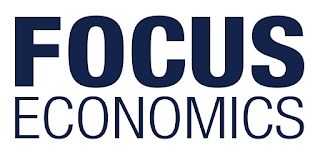Social distancing to contain the Covid-19 pandemic caused the economy to contract at the sharpest rate since the end of 2008 in the first quarter. Consumer spending and business investment plunged, while exports also shrank at a rapid clip amid disrupted global trade. Q1’s dismal result, however, will pale in comparison to the unprecedented contraction expected in Q2. Initial jobless claims topped 30 million in the six weeks ending 25 April.
In tandem, consumer confidence plummeted in April on elevated uncertainty over the economic situation and the frail labor market. As the true impact of the Great Lockdown continued to take shape, Congress passed its fourth economic relief package of USD 484 billion in late April which replenished the Paycheck Protection Program—a small business fund which dried up in mid-April—and provided additional funds for hospitals and testing.
The economy is entering a severe recession amid the Covid-19 economic shock. Social distancing and soaring unemployment will suppress consumer spending—the main growth engine, while investment and trade are set to decline.
Inflation fell to an over one-year low of 1.5% in March (February: 2.3%) amid a sharp drop in energy prices and the consumption void created by the Covid-19 pandemic. Inflation is projected to stay below target for the rest of the year on significant slack in the economy and low energy prices. Fiscal and monetary stimulus represent upside risks to prices.
At its 28–29 April meeting the Fed maintained the target range at its effective floor of 0.00%–0.25%. More importantly, the FOMC reaffirmed its commitment to employing its full range of policy tools to mitigate the economic costs of the containment measures and spur a recovery when the economy reopens.
The dollar index slipped in recent weeks as global financial conditions improved. On 1 May, the dollar index traded at 99.0, depreciating 0.4% month-on-month. The evolution of the Covid-19 pandemic will continue to be a factor in the dollar’s performance moving forward.
Economy contracts at sharpest rate in over a decade in the first quarter
The economy shrank at the sharpest rate since Q4 2008 in the first quarter as the pandemic and measures to contain it hammered activity. The economy contracted 4.8% in Q1 in seasonally-adjusted annualized terms (SAAR), according to an advance GDP estimate released by the Bureau of Economic Analysis. On the heels of the 2.1% expansion registered in Q4 2019, the contraction was even worse than market expectations of a softer 3.5% drop and marked an abrupt end to the longest run of economic expansion in U.S. history. In annual terms, GDP grew 0.3% in Q1, decelerating from Q4’s 2.3% growth. The largest drag on the economy in Q1 came from private consumption, which plunged 7.6% SAAR amid social distancing measures, falling consumer confidence and mass layoffs, which began in earnest in March (Q4: +1.8% SAAR). Consumer spending on durable goods and services were particularly hard hit in the quarter.
Moreover, the downturn in business investment, which has been underway since the second half of last year, intensified significantly (Q1: -8.6% SAAR; Q4: -2.4% SAAR) on a marked drop in equipment investment. Moreover, public outlays moderated in the quarter (Q1: +0.7% SAAR; Q4: +2.5% SAAR) on weaker defense spending and state and local expenditure, while falling private inventories shaved off 0.5 percentage points from headline GDP (Q4: -1.0 percentage point). On the upside, residential investment growth surged to an over seven-year high in Q1. Turning to the external sector, growth in exports of goods and services contracted 8.7% in the first quarter (Q4: +2.1% SAAR), led by a freefall in exports of services, while goods exports fell at a softer rate.
That said, imports of goods and services shrank at the sharpest rate since Q2 2009, leading the external sector to contribute 1.3 percentage points to the headline figure (Q4: +1.5 percentage points). The first quarter’s contraction is likely just the tip of the iceberg in terms of gauging the economic impact of the pandemic. While an unprecedented synchronized fiscal and monetary stimulus drive should soften the blow, FocusEconomics panelists project the economy to contract in Q2 at the sharpest rate since the Great Depression. Extensive damage to the labor market, with over 30 million Americans having filed for unemployment benefits in the six weeks ending 25 April, paired with the lockdown of large portions of the economy, will push the economy into a deep recession. Looking further ahead, economic activity should rebound in H2 as restrictions ease and businesses flicker back to life. Nevertheless, a V-shaped recovery is likely out of the question.


